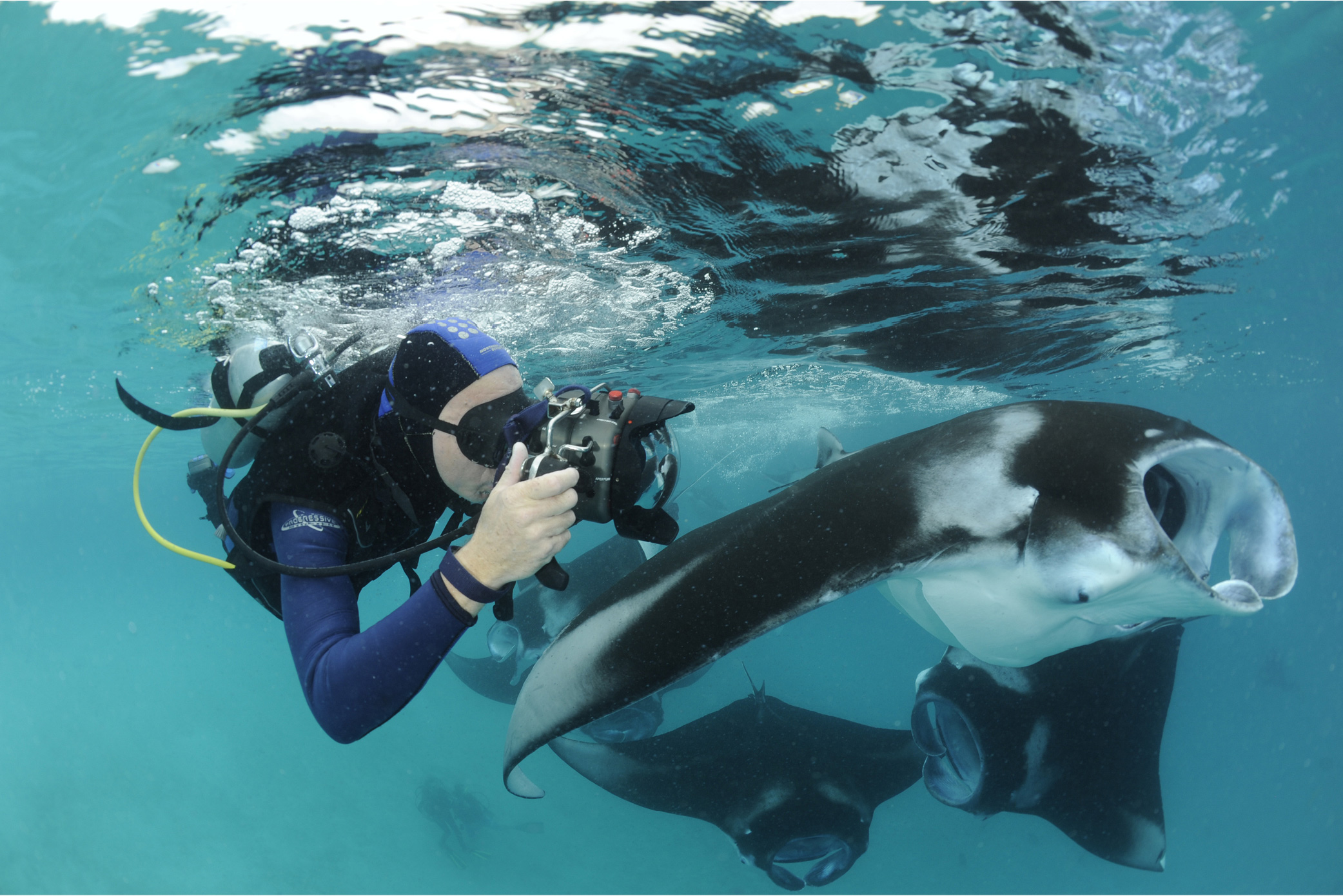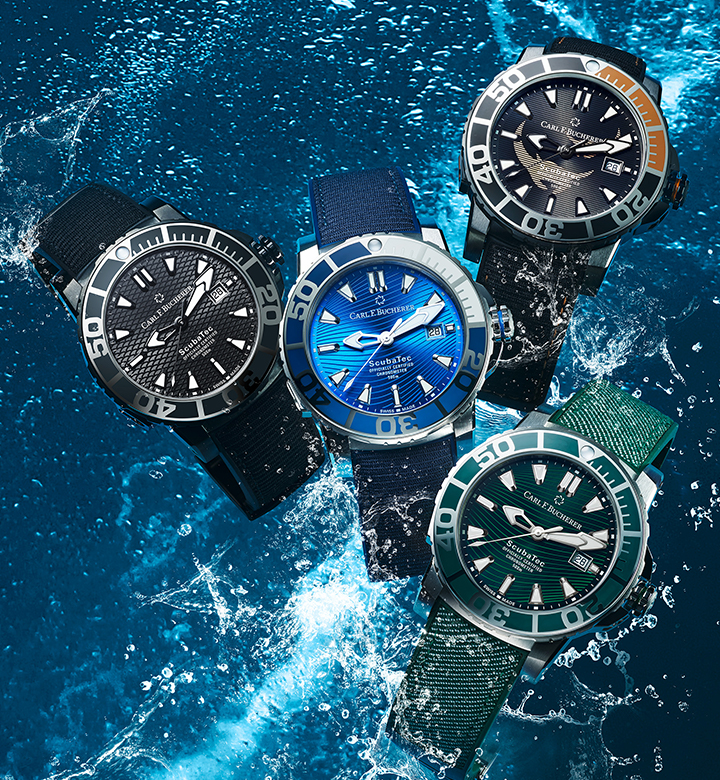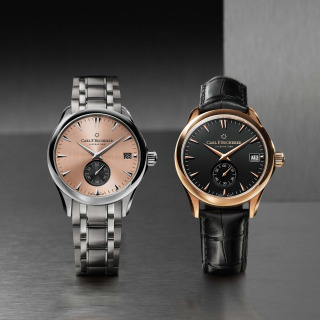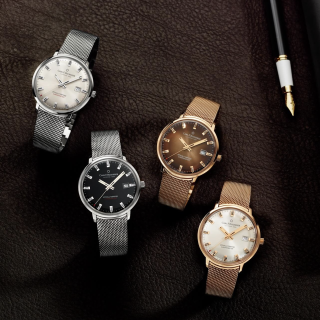MANUFACTURE MOVEMENTS, HIGH COMPLICATIONS, CUTTING-EDGE STYLE
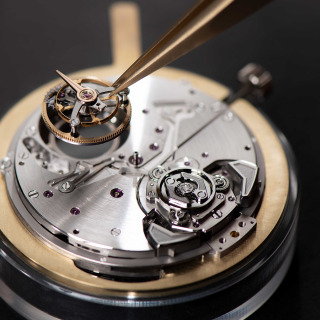
To share some insights about the research expedition in partnership with the Manta Trust in 2023 with you, the internationally acclaimed journalist and writer Jason Heaton ...
To share some insights about the research expedition in partnership with the Manta Trust in 2023 with you, the internationally acclaimed journalist and writer Jason Heaton is taking part in the everyday routine on board and shares the latest results directly from the Ecuador. See his latest update below:
Being a migratory species, manta rays travel great distances, usually following the nutrient-rich cold currents of the world’s oceans. As such, they ignore national borders, routinely crossing from one country’s offshore territory into another’s. Similarly, the Manta Trust knows no borders, and is made up of researchers from countries that span the globe. Taking part in the Ecuador Manta Expedition this year is a melting pot of cultures, scientific disciplines, and nationalities, with participants from Peru, Mexico, Costa Rica, the United States, and the United Kingdom. Even within Ecuador, there are researchers from the Galapagos Islands as well as from Puerto Lopez, where the team has been based these past weeks.
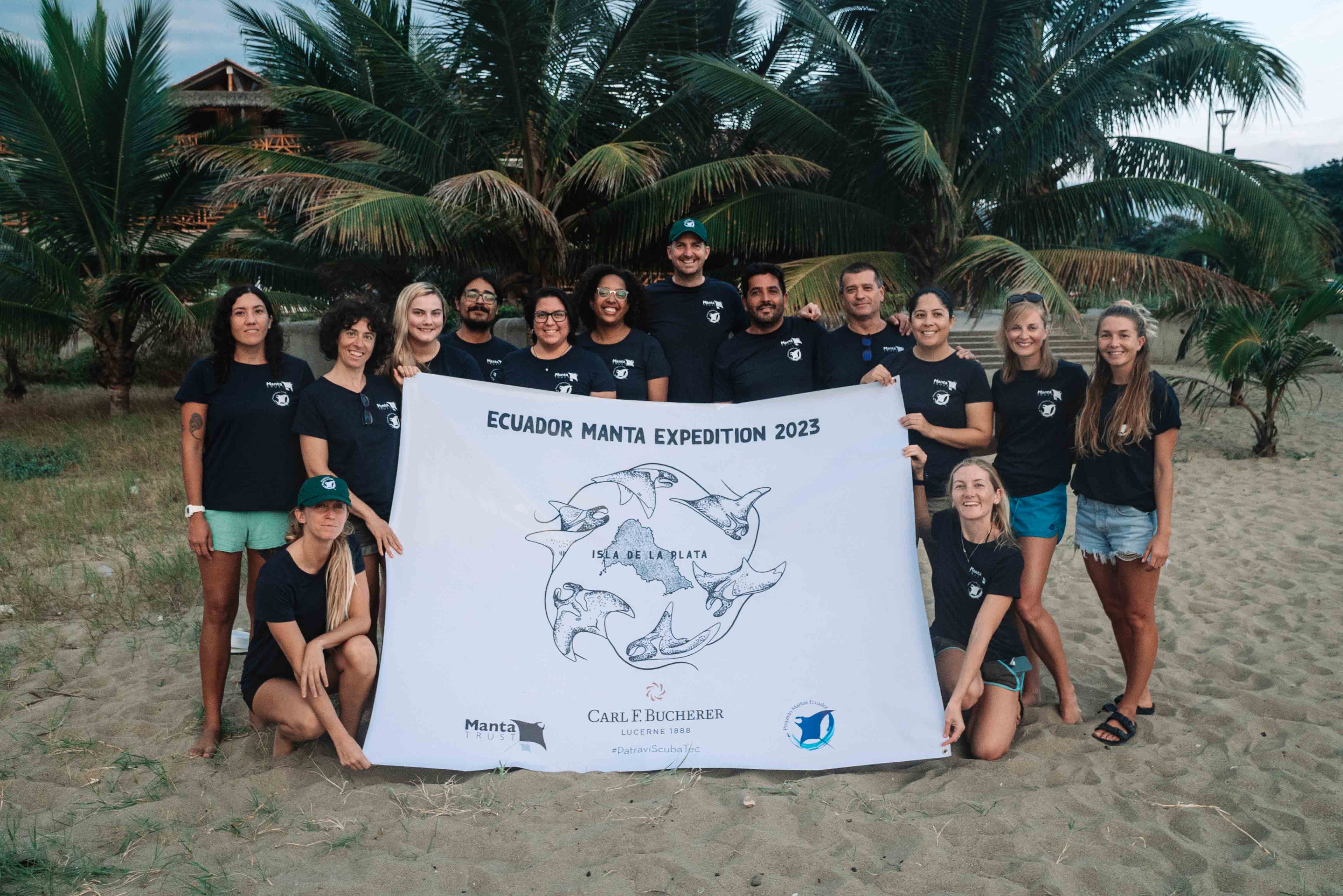
This international makeup is by design. Science, while inherently collaborative, can also be isolating. When research is done locally, it’s easy to lose sight of the bigger picture, and even the best intentioned researcher can end up duplicating efforts or missing key links with colleagues working on similar projects in another country. Guy Stevens, founder of Manta Trust, recognized this when he created the umbrella entity over a decade ago, seeking to bring together a network that crosses borders, all with the aim of improving research and further protecting the endangered population of mantas.
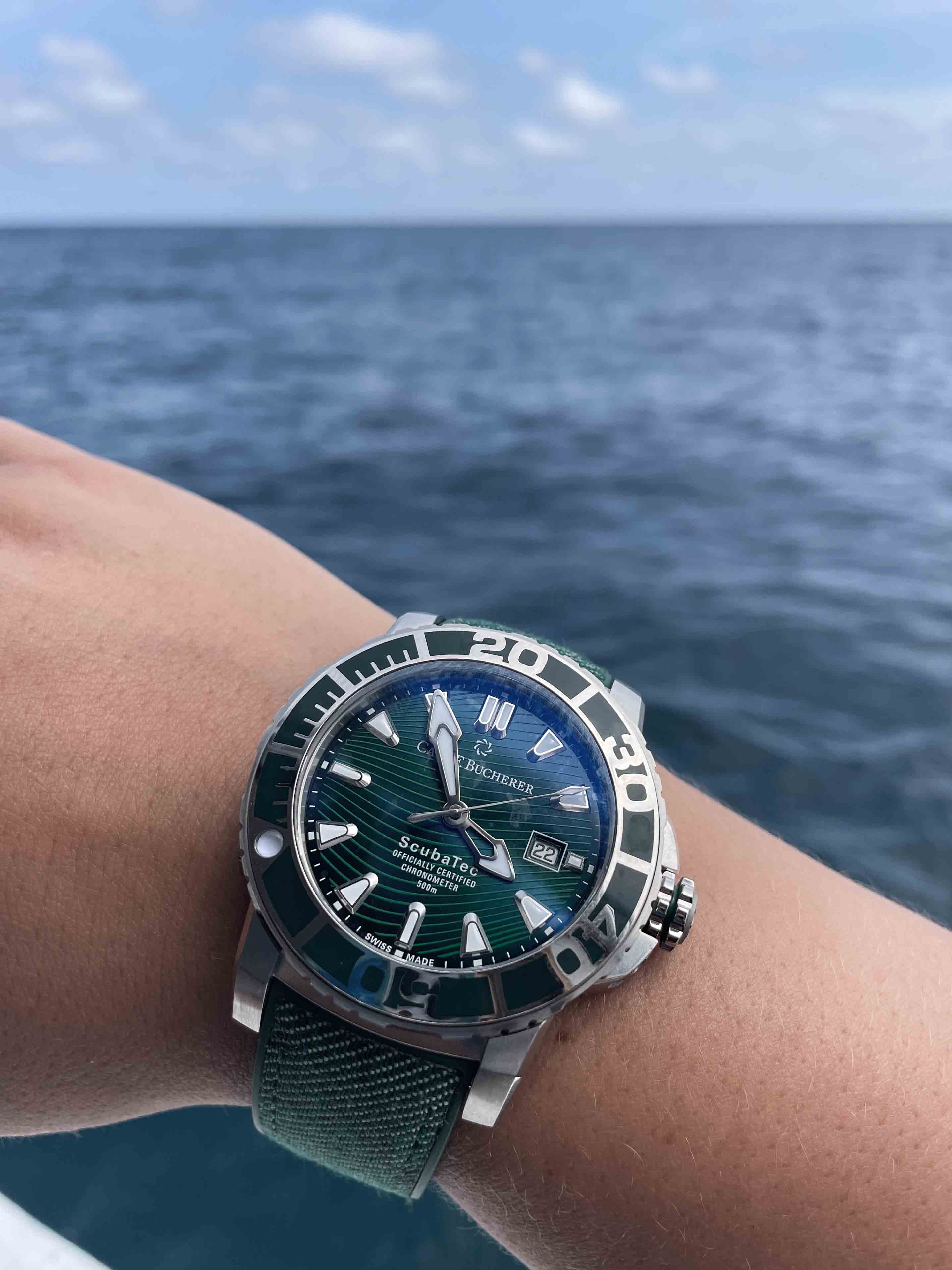
All of the researchers bring different experiences and expertise to the expedition. Stefany from the Peru Manta Ray Project tells of the challenges of observing mantas in the murkier waters offshore from her country, while Marta from the Mobula Conservation Project in Mexico describes how she works with local fishermen to find and tag the devil rays in the Gulf of California. In Ecuador itself, Michel Guerrero, who oversees Proyecto Mantas Ecuador, is the de facto host of our expedition, given his local knowledge and intimate familiarity with the endemic population of mantas.
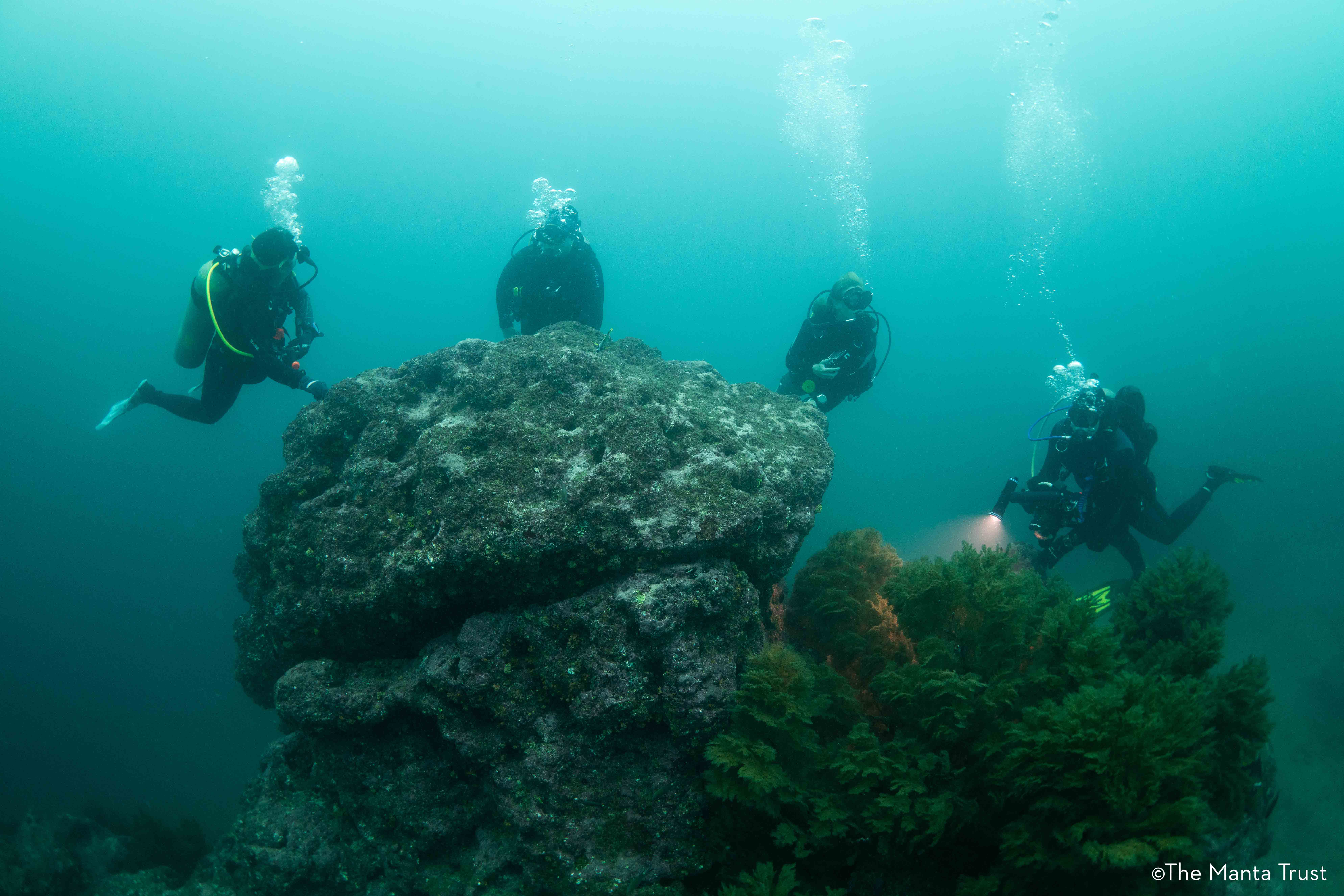
It has been inspiring to witness the spirit of collaboration and the palpable passion shown by this gathering of researchers. These international expeditions are an invaluable way for the extended Manta Trust team to convene and share, and Carl F. Bucherer is proud to make it possible by financially underwriting the entire venture. As the team disbands to return to their own home countries and projects, no doubt they will take back what they’ve learned in Ecuador, but also a renewed sense of purpose and inspiration. But the real winners from this expedition are the mantas themselves.
Researching enigmatic, elusive megafauna like oceanic mantas requires a balance of human observation, lab work, and data analysis. It also relies heavily on technology. Of course, this includes the diving gear the Manta Trust team uses for their hours underwater here in Ecuador—air cylinders, regulators, fins, and buoyancy compensators. But on the dive boat is also a quiver of innovative, purpose-built tools, an arsenal of equipment impressive in its capabilities and its specificity.
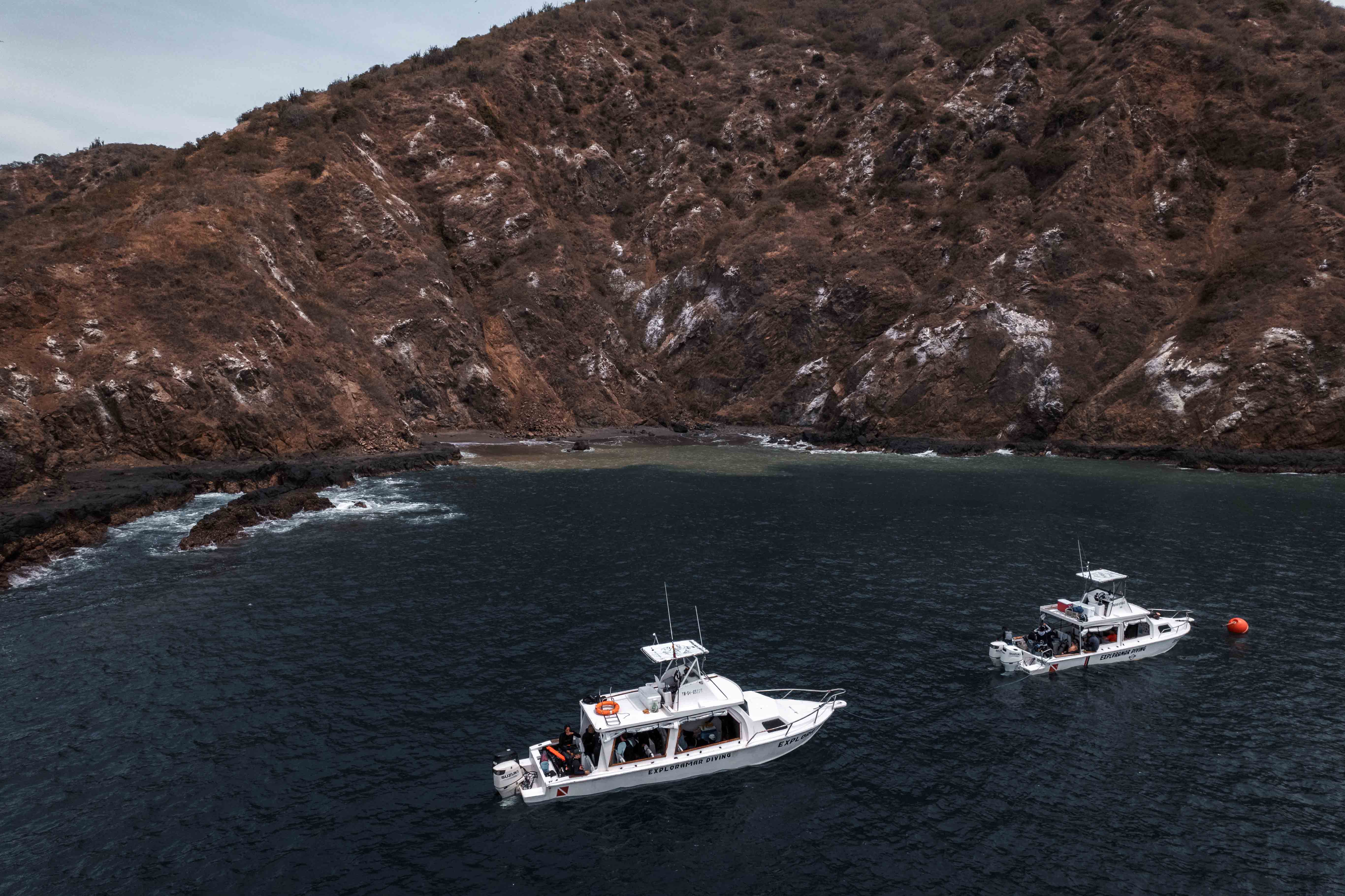
Perhaps the most common tools, not only of the manta researchers, but of marine biologists in general, are found at the end of a spear. Acoustic and satellite tags are embedded under the skin of a manta using a detachable tip. These are deployed by a skillful diver using a handheld Hawaiian sling, a simple speargun powered only by an elastic band. The acoustic tags, once attached to a manta, emit a pulse that is detected by underwater receivers positioned on rocks or reefs. These receivers are then periodically retrieved and their data downloaded. This provides a set of points on a map that show the movement of the tagged animals, allowing researchers to track their travels and draw conclusions in concert with other data points. Satellite tags are deployed in the same way but collect further information, including depth and temperature, the data collected once the tag releases from the manta and floats to the surface, then connecting with a satellite.
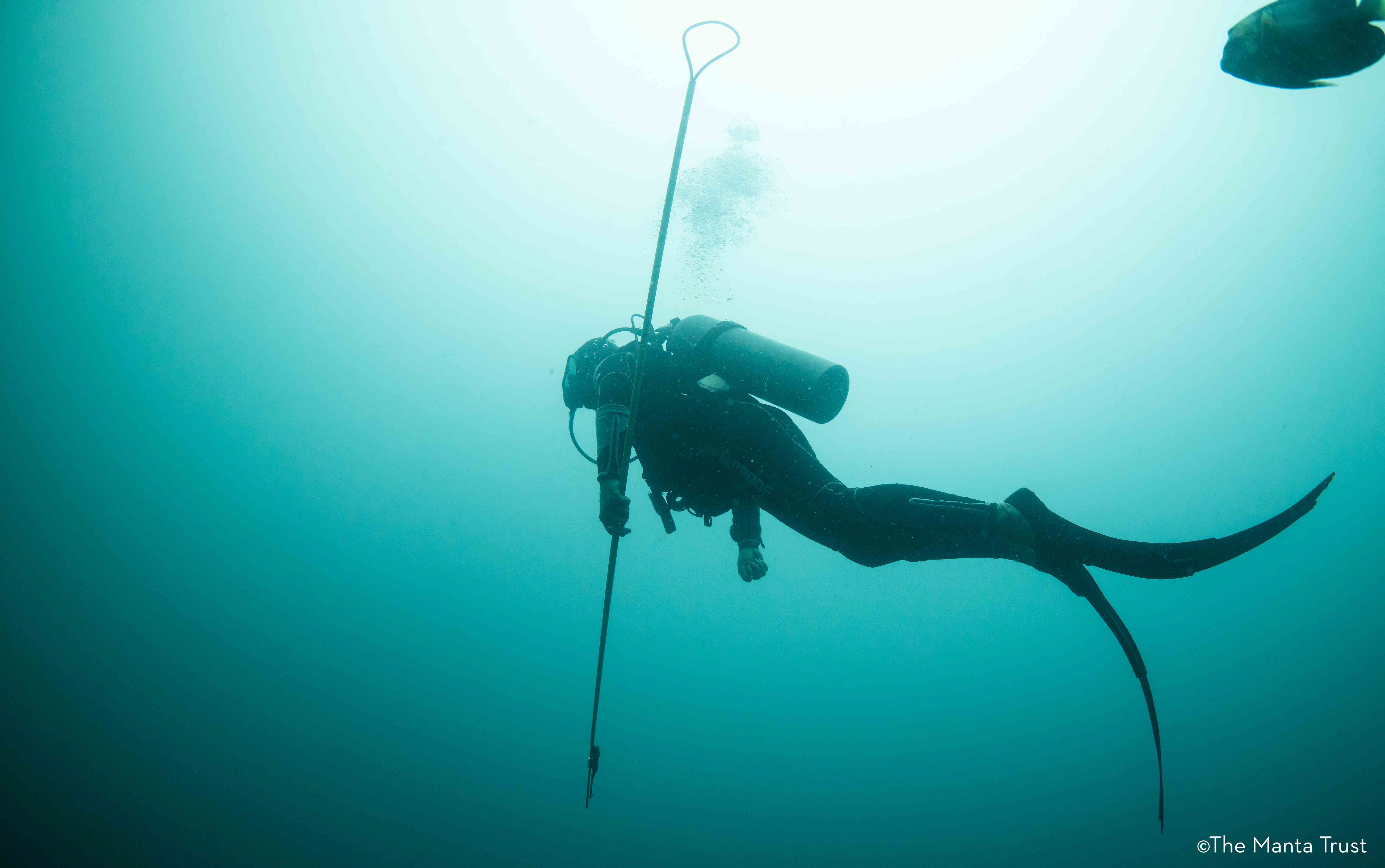
Tissue sampling is also conducted using the versatile Hawaiian sling, but instead of embedding something on the manta, a specialized barbed tip extracts a small plug of tissue, which is then labeled and sent to a lab for thorough study. This can include everything from biological parameters on up to DNA analysis, which can be used to compare mantas in different parts of the ocean, as well as differences in their morphology. In order to measure the wingspan of these ocean giants, the Manta Trust team is making use of a sophisticated dual camera system called Stereo-Video-Photogrammetry, or SVP. Using lasers and wide set GoPro cameras mounted on a handheld frame, the SVP can triangulate wingtip to wingtip for an accurate distance. This can be used to estimate the age of a manta, when compared to earlier measurements, or to other animals. The system is rather sensitive and must be handled with care and frequently calibrated.
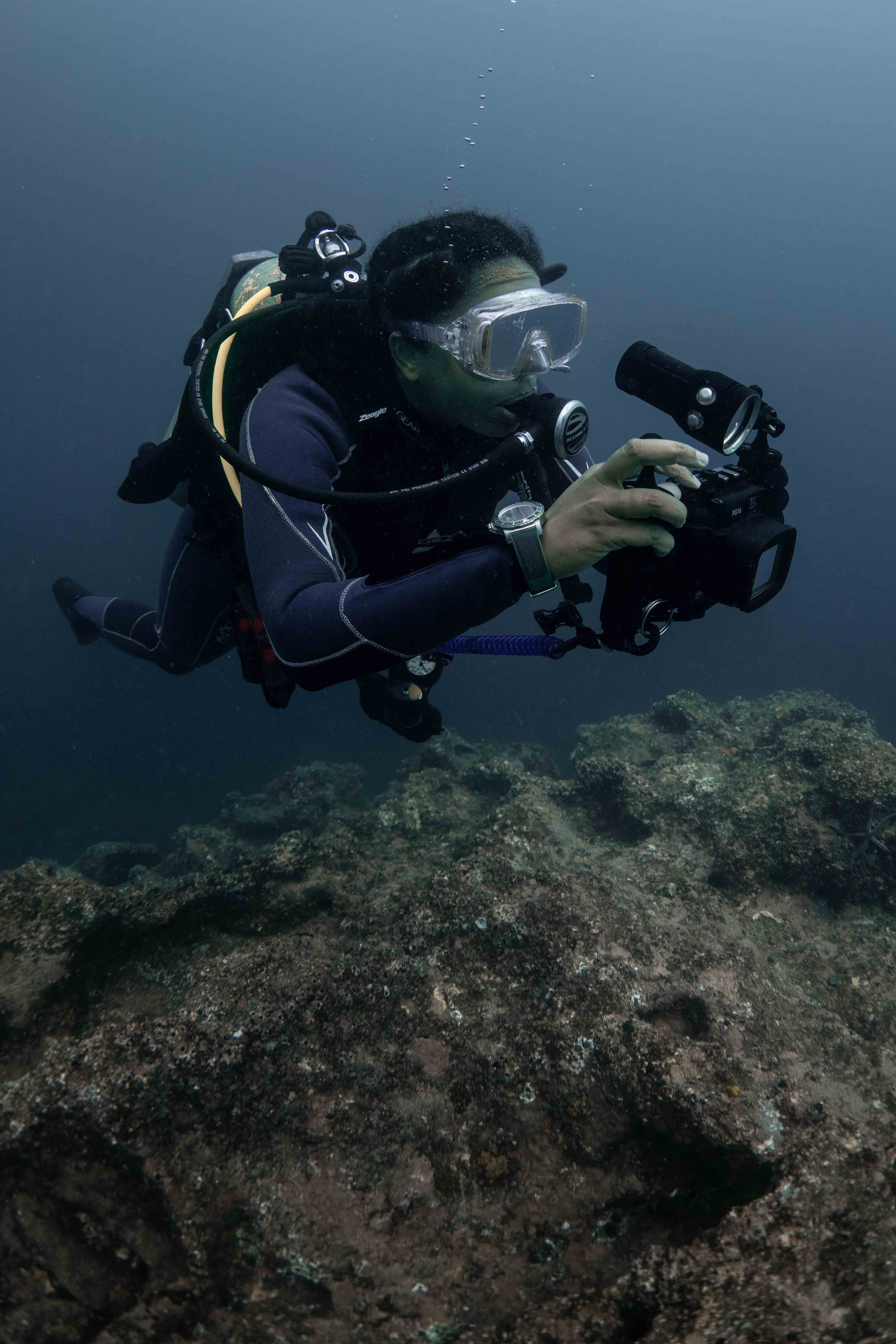
Of course, the most basic form of data collection is through photography, and almost all the divers are carrying a digital camera of some sort, from GoPros on up to large DSLR systems. Carefully composed photos that show the underside of a manta show the crucial skin patterns as well as its genitalia. Photos from the researchers, combined with those uploaded by countless other divers, both scientists and holiday divers, are loaded into an image database and painstakingly sorted and correlated to provide accurate identification of individual mantas. This past week, a new type of system was deployed on a known manta cleaning station off of Isla de la Plata. The “Eyes on the Reef” remote time-lapse camera takes a photo at regular intervals for several days at a time. This provides a sort of 24/7 view of the reef, a huge advantage for researchers who can only observe the area for about an hour at a time while diving once or twice a day. The camera is then retrieved and the footage reviewed.
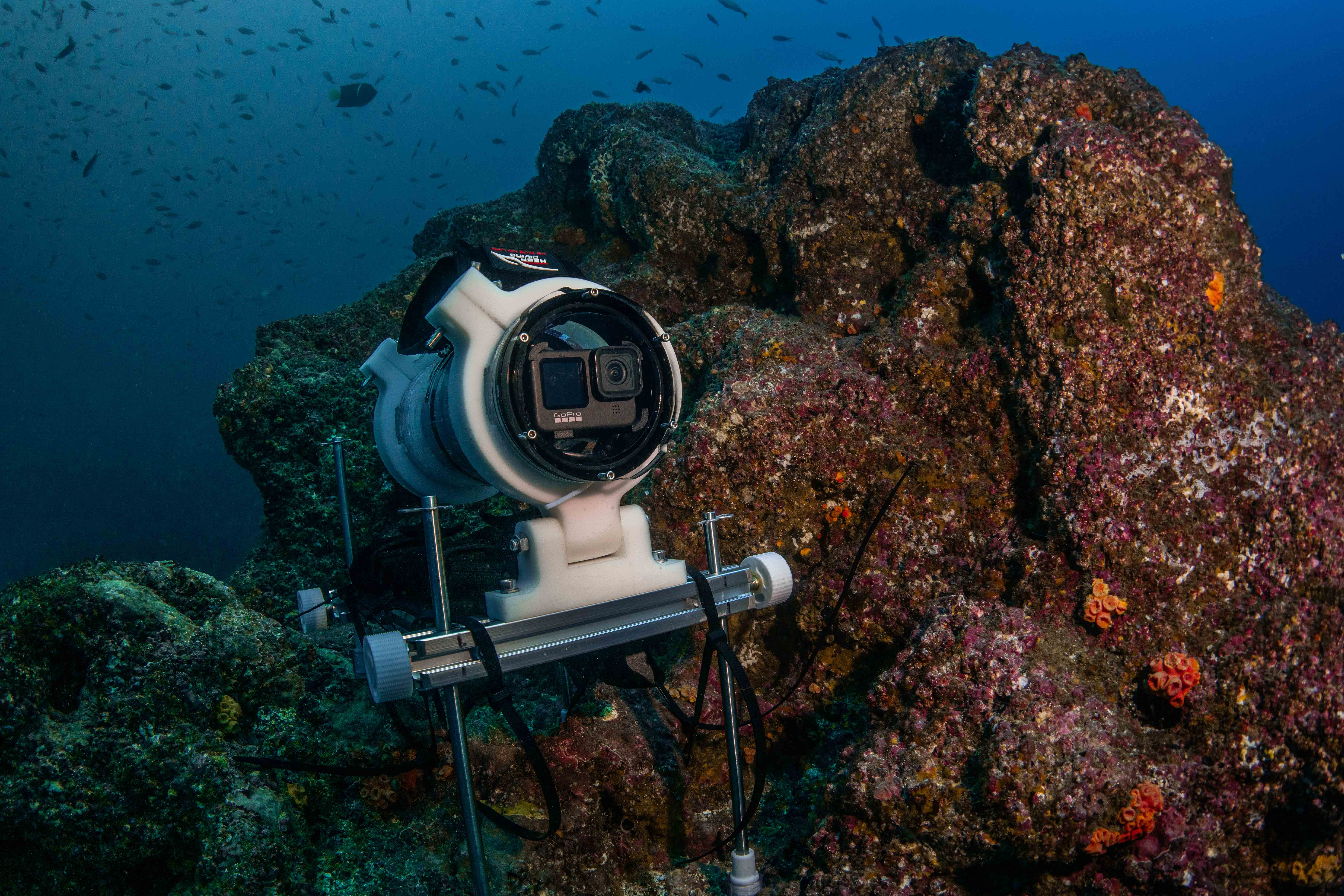
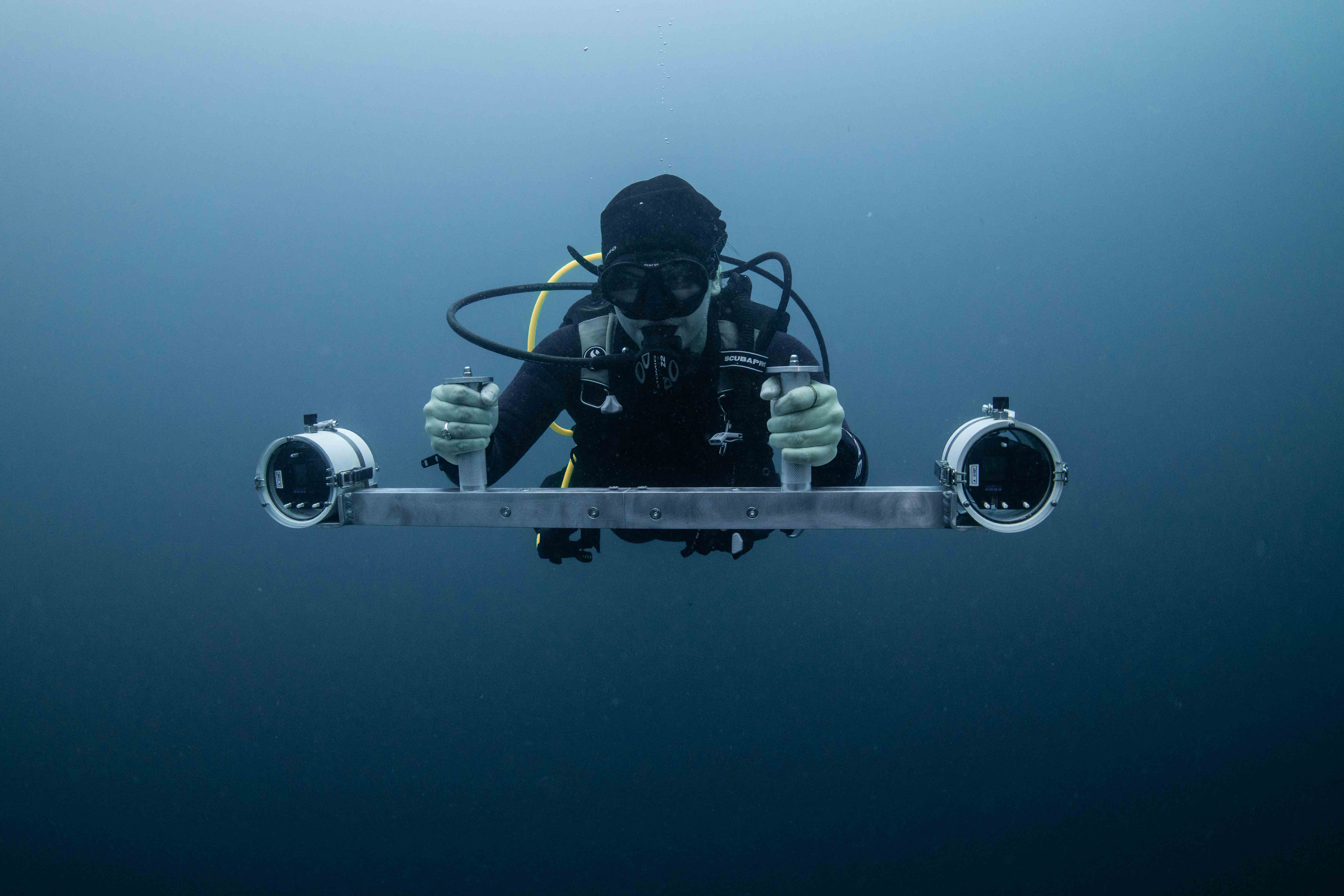
Perhaps the most fascinating tool the Manta Trust team is using is the Contactless Underwater Ultrasound Scanner. As its name suggests, this handheld device uses water as a contactless medium for scanning pregnant mantas to observe fetuses still in the womb. As one might imagine, using this scanner requires great skill, since a diver must be within about 10 centimeters of the manta. When all goes well, the results are truly exciting. As impressive as all this technology is, it is nothing without the skill and smarts of the researchers using them. Manta Trust has brought together the best in the field for this expedition in Ecuador, that is fully financed by Carl F. Bucherer. Together it is producing some groundbreaking science, and the future of manta research looks bright.
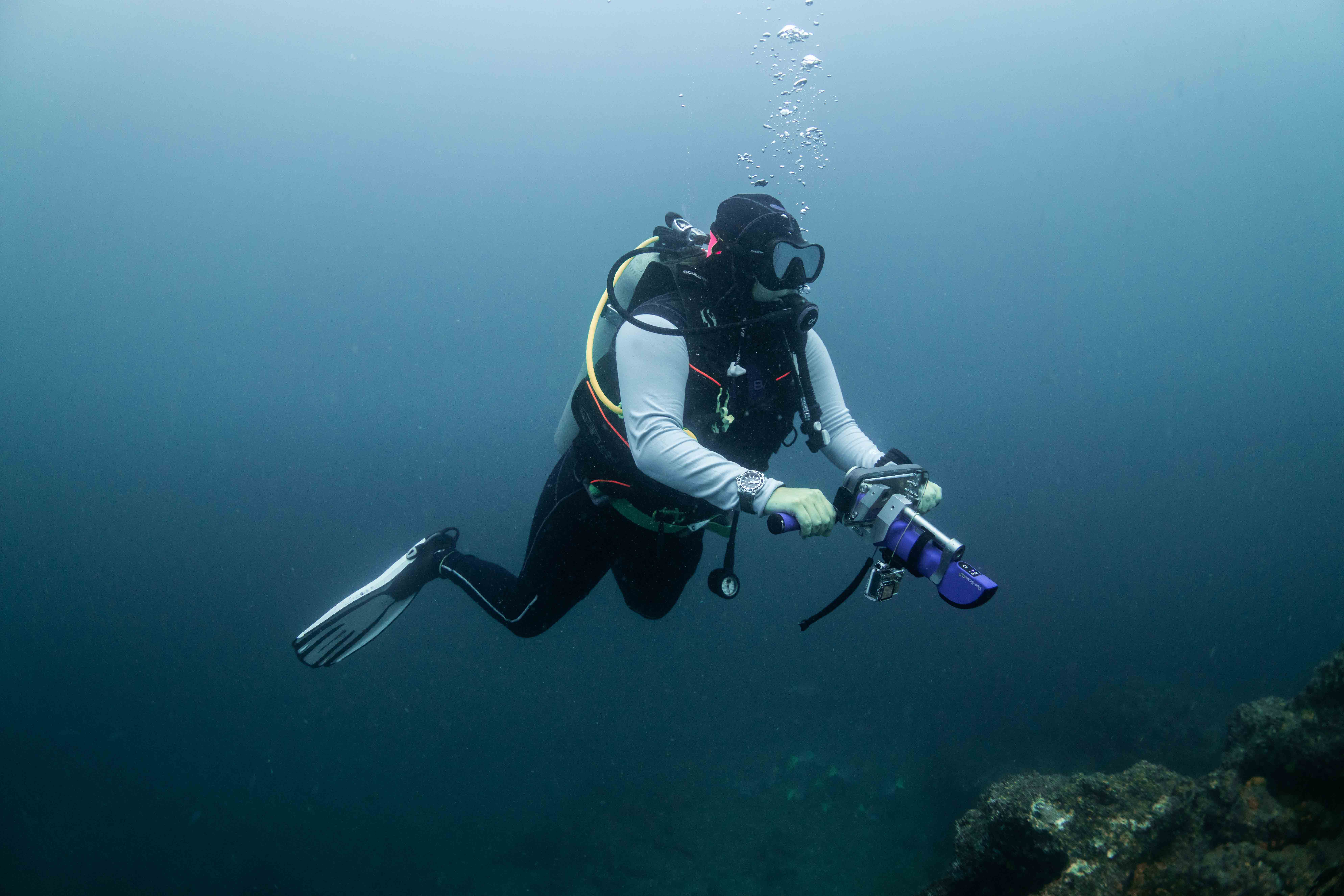
The Pacific is superlative in every sense of the word. It is the largest and deepest of the Earth’s oceans, covering 30% of the planet. So, it’s no surprise that the largest creatures live in the Pacific. Back roll off of a dive boat anywhere in this blue frontier and you never know what you might see—whales, sharks, whale sharks, orcas, the elusive mola mola, or, the reason we are here in Ecuador: oceanic manta rays. But even finding these gentle giants in such a vast frontier is like searching for the proverbial needle in a haystack. But there are a few places where chances are better, and that is what has brought the Manta Trust team the Manta Trust to the small, uninhabited island of Isla de la Plata, 40 kilometers northwest of the small fishing village of Puerto Lopez.
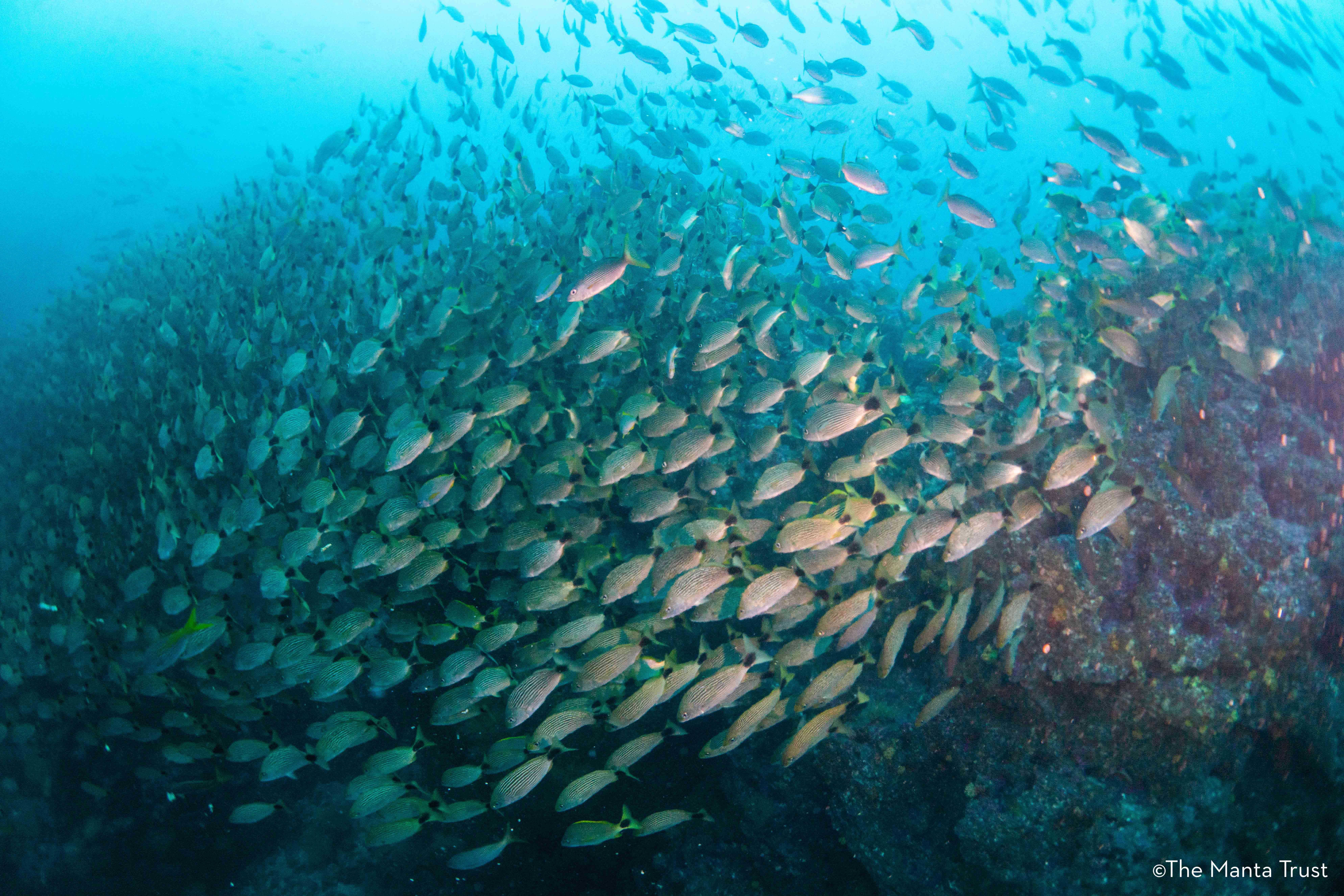
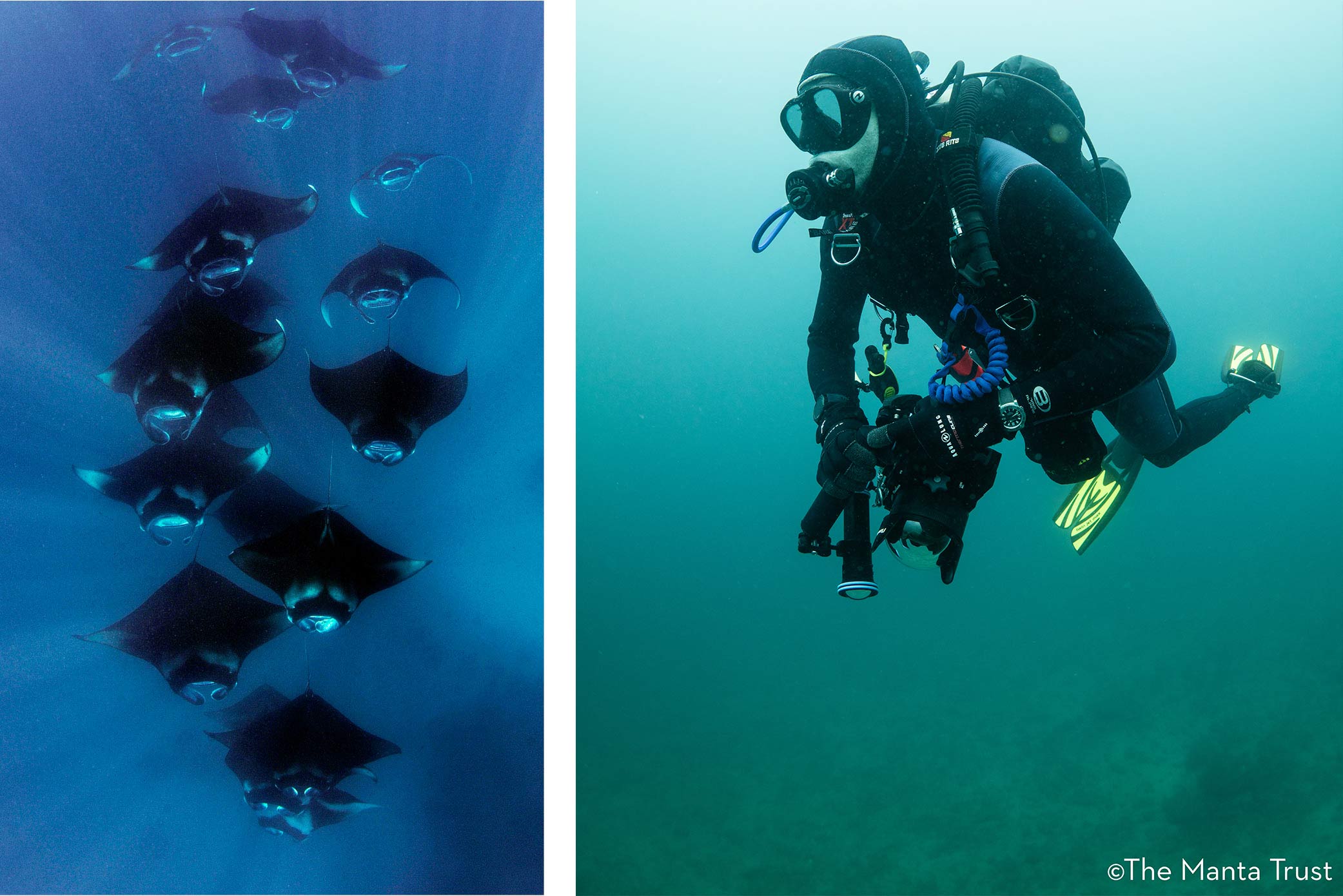
Thanks to past work by the Manta Trust researchers, we know that the waters around the island see the greatest number of oceanic mantas on the planet. During the late Southern Hemisphere winter, hundreds of these magnificent megafauna pass through, following the nutrient-rich upwelling of the cold Humboldt Current. But so far this season, the water has been warmer than usual—a lot warmer—thanks to the El Niño oscillation and perhaps also to climate change. On our first day of diving, we got skunked. We did two dives on known promising sites—“cleaning stations”—where mantas tend to congregate and smaller fish rid them of parasites in a symbiotic relationship. The hope is to attach acoustic and satellite tags, take tissue biopsies, measure their size, and use photography to identify them. But in the 26° Centigrade water, none passed by. Nature does not adhere to a schedule, nor to our wishes, and so we wait, and hope.
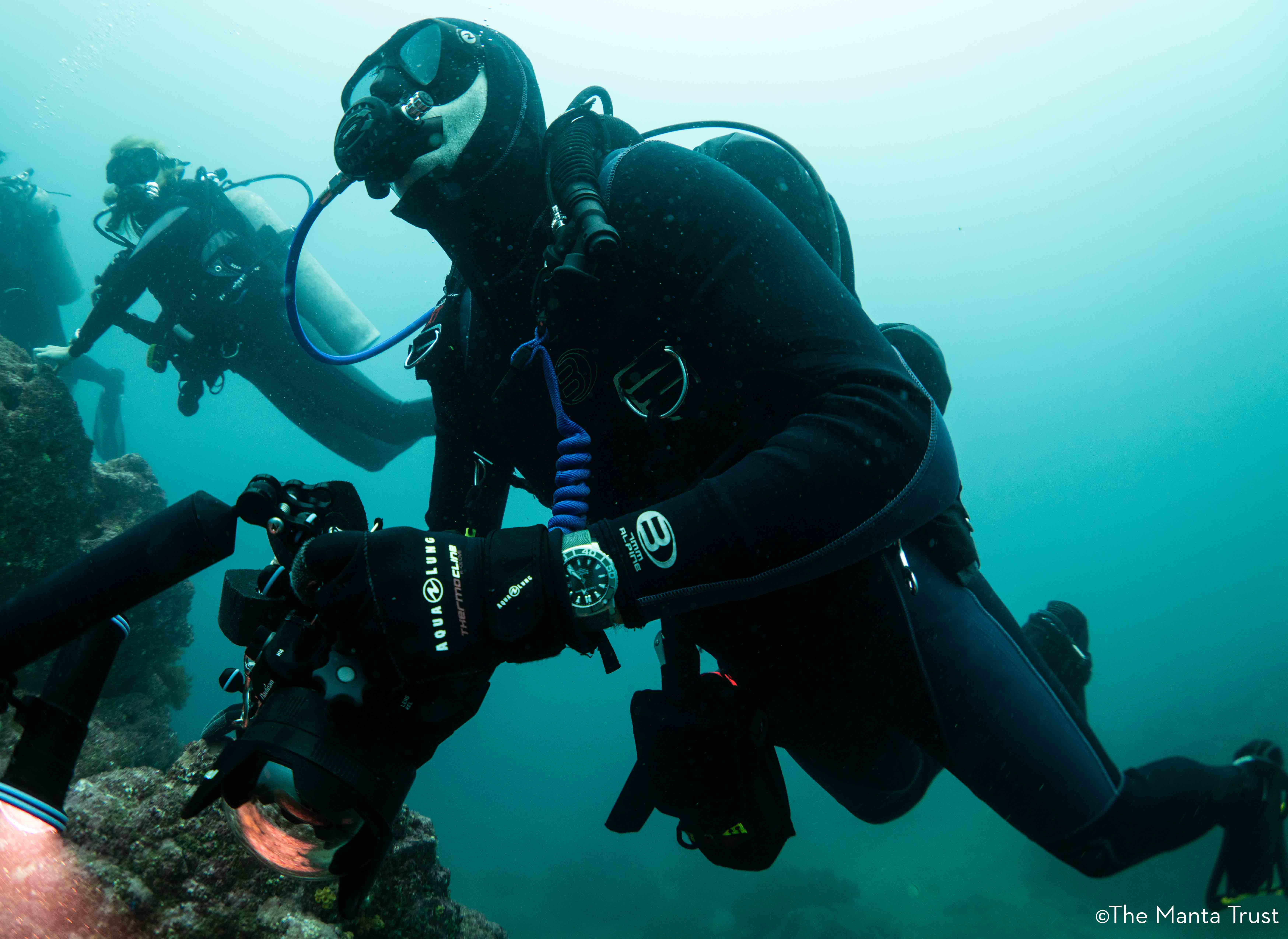
That’s not to say it was a bad day of diving. Throughout the first dive, we were serenaded for a full hour by the haunting vocalizations of humpback whales, heard but not seen. We saw whales on the boat rides out and back also, breaching and arcing out of the water. Were they the same pair we heard singing underwater? Impossible to say. There was a Tumbes round stingray skittering across the sea floor, moray eels, blennies and a curious octopus in the crevices, and swirling schools of colorful fish defying the considerable current. There are, as the saying goes, other fish in the sea. And there’s plenty more diving to do. So, we wait for the Humboldt Current to turn on the cold tap and bring the mantas.
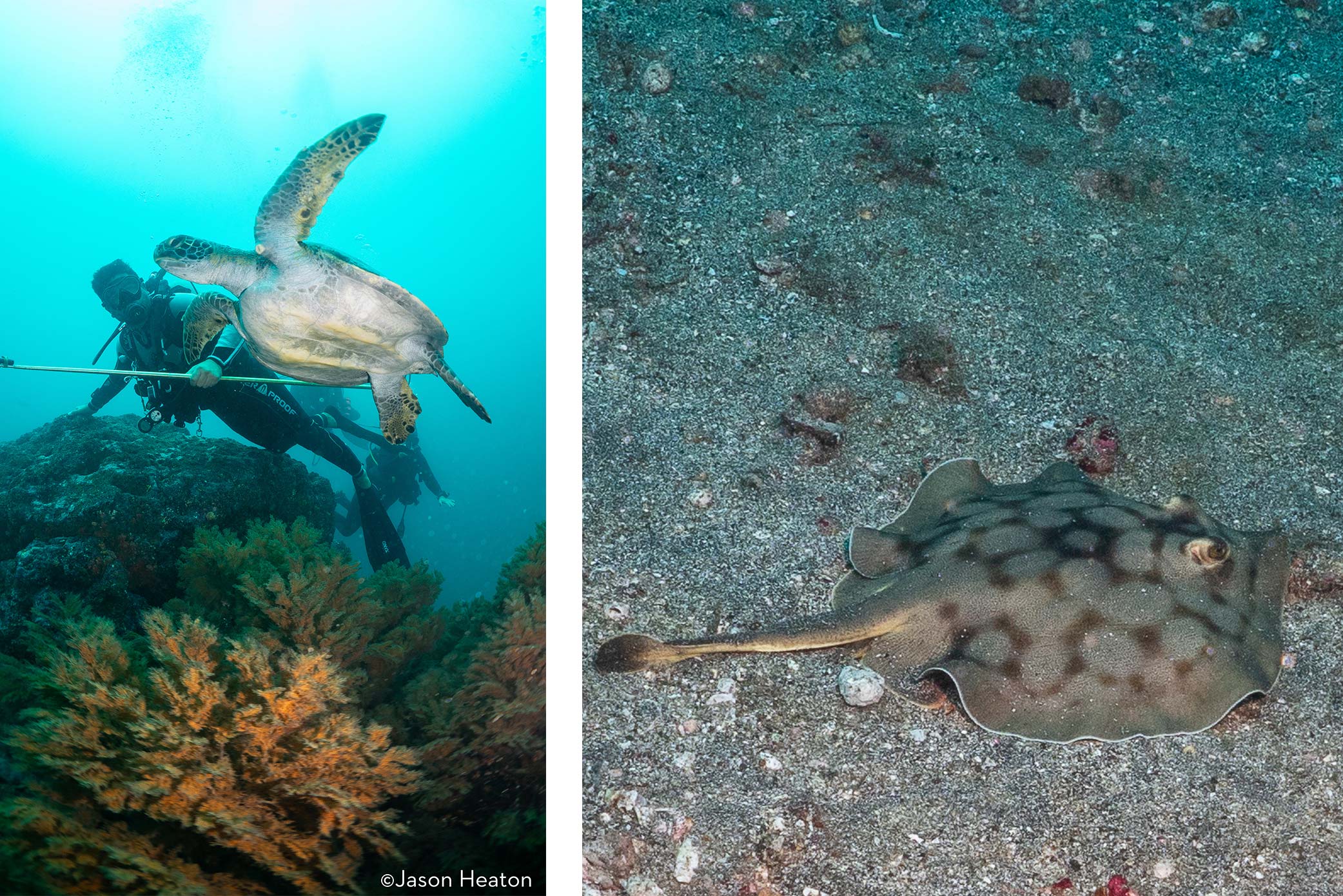
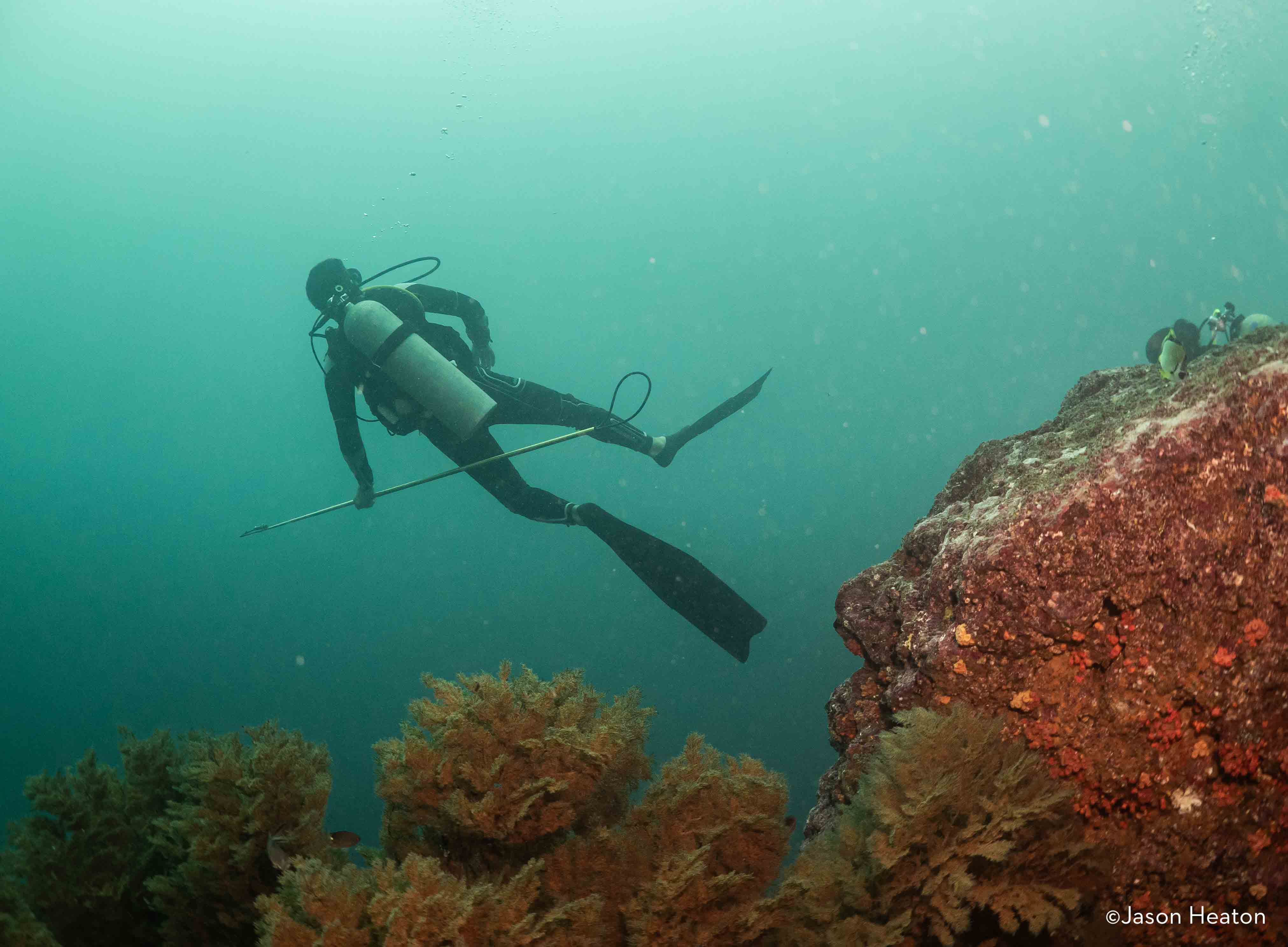
Focusing on the next generation, Carl F. Bucherer entered into its long-term partnership with the Manta Trust team in 2013 and has been pleased to be able to help build solid foundations for a sustainable future for the oceans where manta rays thrive in healthy, diverse marine ecosystems. The Patravi ScubaTec Verde is the fifth watch Carl F. Bucherer has launched in partnership with the Manta Trust since 2017. A portion of the proceeds from the sales of each model was donated to the foundation, and a contribution from the sale of the Patravi ScubaTec Maldives is specifically dedicated to the Manta Trust’s new floating research station project.
The large skill-varied team of international experts on board can focus on a wide variety of research and education aims, from population ecology to habitat use, migration behavior, community engagement, historical knowledge, and much more. It will also provide a rare chance for the Manta Trust’s disparate team to spend several weeks together in person. This offers a precious opportunity for friends and colleagues to share ideas and learn from each other, allowing them to conceptualize new conservation strategies, and brainstorm ideas for furthering manta ray research and education efforts both within the Maldives and globally. We are thrilled to be able to make it happen.
